These days, you’ll find a multitude of excellent thin, light, and fast ultraportable laptops in stores, but if the size and portability of your computer matter more than anything else to you, a mini laptop with an 11-inch, 10-inch, or even a smaller display might be the ideal choice over everything else.
Table of Contents
Our recommendations are based on our 15+ years of experience in reviewing and testing this sort of portable lightweight 10/11 inch laptops.
In order to make it a little easier for you to single out the best small laptops that would suit your needs and your budget, I’ve split this article into several sections:
- inexpensive 11-inch laptops (around $400 or less),
- premium 11-inch options ($400++),
- the best small laptops with 10-inch or smaller displays,
- best ultrabooks (13-inch displays and larger)
We’ll go over the important details of each class, with the strong points and the quirks that you need to be aware of for each of the recommended options; I’ve also added links to our detailed reviews and to our deals pages, and you can get in touch with me in the comments section at the end of the article if you have any questions or need my help.
What is a mini laptop in 2025?
Before we jump into the core of the article, let’s quickly touch on what you should expect from this kind of small computers.
A mini laptop offers the same functionality and aspect as a regular device, but in a smaller format. Hence, this article goes over ultra-compact small-screen laptops, and leaves out the laptops with a 12-inch, 13.3-inch, or larger display sizes. I’ve covered those in this Best Ultrabook buying guide instead, which goes over the Apple MacBook, Asus ZenBook, Dell XPS, Microsoft Surface Laptop, HP Envy x360 lineups and a multitude of other options built on Intel Core, AMD Ryzen or Qualcomm Snapdragon hardware, with the latest traits and features that money can buy today.
With the 11-inch, 10-inch and even smaller-sized options that we’re discussing in this article (which are also known as netbooks on mini-laptops), you’re still getting most of the same features and abilities, but you will have to accept lower-power hardware suitable for basic everyday use, as well as smaller displays, fewer ports, and more cramped keyboards. Of course, there are exceptions to consider, and at the same time, these computers are highly portable and easy to carry around, offer long battery life, and are generally quite affordable.
With that out of the way, let’s start with our thoughts of the best smallest laptops with sub-11-inch displays.
Affordable 11-inch small laptops & 2-in-1 hybrids
The offer for budget 11-inch small laptops is diverse, especially in the $200 to $400 range of compact no-fuss daily computers, travel companions, or inexpensive small laptops for your kids; these are just some of the common use cases for small laptops.
Don’t expect premium features or materials in this class, but you will find here simple and compact computers that can handle everyday tasks (browsing, email, video streaming, text editing) and can run for quite a few hours on a charge.
Chromebooks – snappy and with excellent battery life
Chromebooks are possibly your best bet in this segment at this point. As long as they meet your requirements, you’ll hardly find better value for your money elsewhere. If they don’t, we’ll discuss Windows laptops further down in the article.
You must, however, understand what a Chromebook is and what it can and especially what it cannot do for you. For that reason, I’ve put up a whole detailed article on Chromebooks over here, which you should go through.
In very few words, if you’re connected to the Internet most of the time and your activities mostly involve browsing, streaming content on Youtube or Netflix or Spotify, eMail, text-editing, and other everyday web-related tasks, a Chromebook is going to be a perfect match for you. On the other hand, if you mostly use your laptop offline, or if you want to run specialized software for your work or school, a Windows notebook is the better choice for you, and we’ll discuss them further down in this article.
For those basic chores, though, Chromebooks are quicker than the Windows computers you’ll find for the same kind of money, especially in the sub $400 price segment, as well as safer and simpler to use.
They’re designed so you don’t have to deal with updates, they’re safer against viruses and harmful exploits, and easier to customize and set up to your needs. Much like with your phone, you install apps from a dedicated web store with pre-vetted applications, and most of the Chromebooks available today also support Android apps from the PlayStore, as well as Linux and even Windows apps to some extent.
Most of the available Chromebooks you can find for less than $400 are built on lower-power processors, with 4-8 GB of RAM memory, 16-64 GB of storage expandable through the included card reader, IPS screens with HD or Full HD resolution, an HDMI port for watching movies on an external display, as well as long battery life and fast charging abilities, in most cases. As a recommendation, stay away from older devices with Intel Atom processors and only 2 GB of RAM, those get sluggish with today’s requirements.
Over here I’ve gathered a detailed selection of the best available small-format Chromebooks at the time of this update, and you’ll also find another updated selection via this link.
That aside, our condensed list of recommendations for affordable ultra-compact mini Chromebooks is down below:
Acer Chromebook Spin 311 2-in-1 small laptop
Starting at around $230 at the time of this update, the Chromebook Spin 311 is our favorite inexpensive compact 2-in-1 Chromebook. It offers an 11.6-inch touchscreen display with an HD IPS panel, it’s built on efficient hardware platforms with 4 GB of RAM and 32/64 GB of storage space, and gets a 38 Wh battery that delivers 6-10 hours of battery life on a charge.
You’ll have to settle for an all-plastic construction though, with fair, but not excellent build-quality, thicker bezels around the display, and a total weight of around 2.6 lbs, so overall this is not as portable as some of the other options we’ll discuss further down.
Lenovo Chromebook Flex 11 2-in-1 mini laptop
This is Lenovo’s alternative to the Spin 311 above, with nearly the same features, traits, and a similar price point of around $200.
This gets the same kind of 11.6-inch touchscreen display and the same convertible format, but slightly different hardware with a Mediatek processor, and a larger 42 Wh battery that allows it to last a little longer on each charge.
The downsides are normal for this price point, with unappealing bezels, a total weight of around 2.6 lbs, and rather tinny audio.
Lenovo Chromebook Duet mini-tablet
While the Duet is a smaller 10-inch laptop computer and I shouldn’t include it in this exact section, I just have to mention it as an excellent choice in the sub $400 segment, as long as you’re OK with its smaller display.
And that’s because the Chromebook Duet offers a superior-quality screen to any of the other alternatives in this class, with a brighter and richer FHD IPS panel and 16:10 aspect ratio. Furthermore, the build quality of the Duet is also second-to-none in its class, with a matte aluminum back and glass on the front.
The form factor is that of a tablet, but Lenovo bundles a keyboard folio for laptop use, and the two make up for around 2 lbs combined. Spec-wise, everything is motorized by a Mediatek platform, paired with 4 GB of RAM and 64 GB of storage space, which feels alright with daily use and proves to be highly efficient, squeezing 6-12 hours of battery life out of the 28 Wh battery inside.
All these add up to the Chromebook Duet being by far the best-value option in the sub $400 class of mini laptops. Just make sure you’re fine with a 10-inch device and its slightly cramped keyboard, expected at this size.
The best Windows-based 11-inch small notebooks
This section includes 11-inch laptops that run fully functional Windows environments, with either clamshell or 2-in-1 designs, selling for between $150 to $400.
In this segment, my advice would be to aim for a configuration with at least 4 GB of RAM, at least 64 GB of storage, and one of the faster CPU options, otherwise the computer is going to struggle even with light multitasking or you won’t have enough storage space for Windows and your software.
Here are some of the sub-$300 clamshell units that I’d have on my radar:
- Asus VivoBook Go 11 – the updated version of the popular Asus L210, E203 and E12 lineups, the Asus VivoBook Go is a compact and lightweight laptop (2.2 lbs) with a clamshell form factor and plastic chassis. It’s lighter and smaller than many of the alternatives in the sub-$250 price range, and bundles a fanless Intel Jasper Lake Celeron N4500 processor, 4 GB RAM, and 128 GB eMMC storage on the base model, as well as a 38 Wh battery.
The screen isn’t much, though, with an HD LED panel and no option for IPS. Still, that’s the norm in this price segment with Windows laptops, as the software license takes its toll, and the OEMs have to cut some corners in order to meet the low price point.
Here are a few other options in this segment:
- Dell Latitude 11 – rugged plastic construction, clamshell, 11-inch HD matte display, more powerful Intel Jasper Lake Pentium hardware and faster SSD storage, 40 Wh battery, weighs 1.33 kg / 3 lbs.
- HP Stream 11 – plastic construction, clamshell, available in a few different colors, 11-inch HD LED TN matte display, Gemini Lake Celeron 4Core processor, 4 GB RAM, and 64 GB eMMC storage on base model, 38 Wh battery, weighs only 1.1 kg/ 2.4 lbs, around $220 for mid-level Gemini configurations, older Apollo Lake versions also available.
- Lenovo IdeaPad 1i 11 – plastic clamshell format, 11-inch HD display, Gemini Lake Celeron 4Core + 4 GB + 64 Gb eMMC, 32 Wh battery, weighs 1.2 kg /2.7 lbs, around $220;
- Lenovo ThinkPad Yoga 11e – ruggedized 2-in-1 format, 11-inch HD IPS touchscreen, Gemini Lake Pentium with 8 GB RAM and 256 GB SSD, 42 WH battery, weighs 1.5 kg /3.4 lbs, around $370.
Most of these options are similar in specs, with 11-inch HD screens and Gemini Lake-R hardware. Among these, I lean towards the Asus Go and the HP Stream 11 for their slightly nicer builds, reduced weight, and low price, but the newer Lenovo ThinkPad Yoga 11e is a worthy alternative if you value the superior IPS panel with touch and the convertible rugged format. Furthermore, the Dell Latitude 11 is an interesting option as well, with more powerful hardware specs than most other 11-inch notebooks available these days, and a good keyboard, making it a proper option for programming and engineering work on the go.
If the options above did not fully convince you, you’ll also find a larger selection of compact Windows mini-laptops via this link, with user reviews and updated prices.
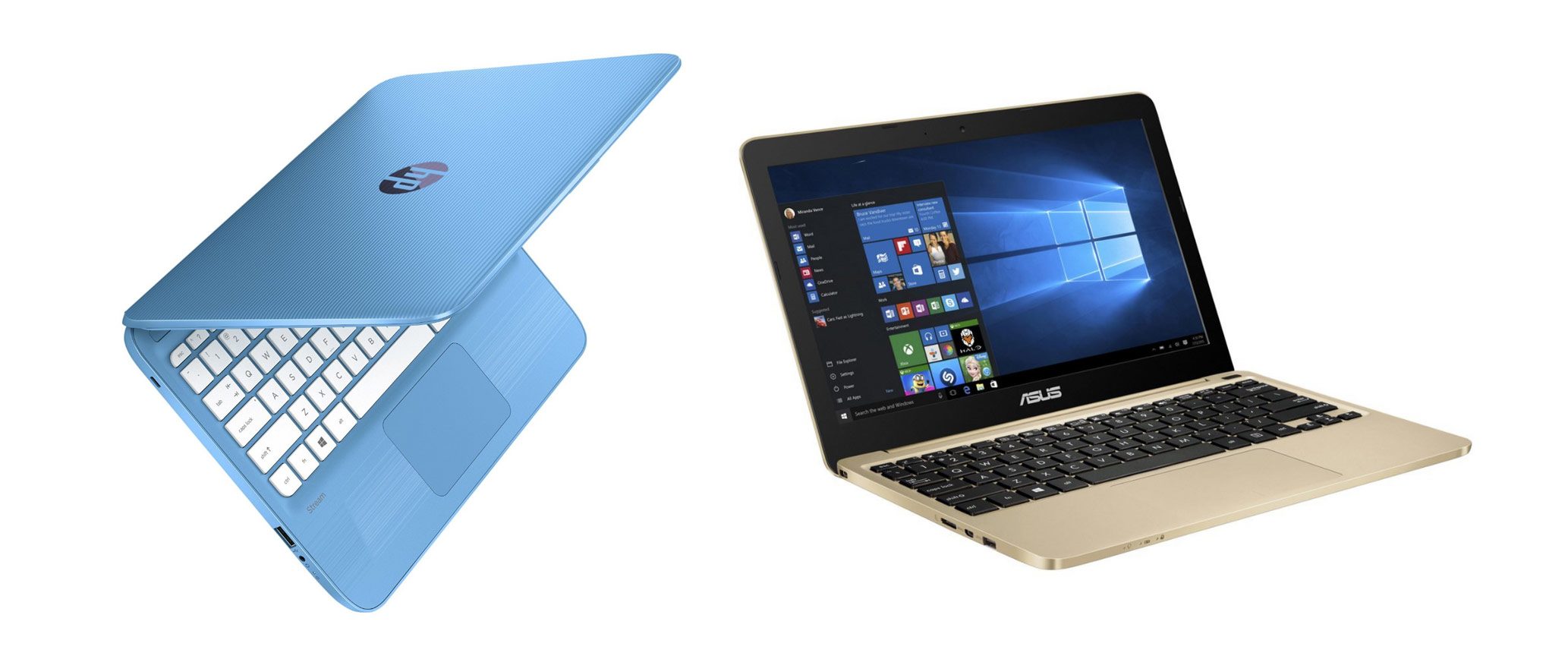
The HP Stream 11 and Asus VivoBook Go series are some of the better Windows small laptops you can have for around $200
Most manufacturers migrated their premium ultraportables towards the 12 and 13-inch segments in recent years, as those formats can easier accommodate modern and more powerful components, better displays, and a larger battery.
Hence, if you’re looking for 2025 specs with either Intel Core + Iris Xe or AMD Ryzen + Radeon hardware, those are mostly available in the 12+ inch models mentioned above. For what is worth, many of those models are actually compact and lightweight, as the OEMs were able to improve their designs in recent years, shrink up the bezels and optimize the designs for modern expectations. Not to mention those also get nicer displays and features not available with these smaller-screen models.
Thus, if a premium ultracompact laptop is what you’re after, there’s hardly any compelling option in this 11-inch segment anymore. Perhaps you can still find an HP ProBook x360 11 Education or perhaps a refurbished version of the popular MacBook Air 11, both available with SSD storage and 8GB of RAM.
The HP Elitebook Revolve 810 is another very interesting older model and most likely difficult to source out, but remains even to this day one of the most complete 11-inch laptops ever made. It gets a sturdy and compact metallic chassis, an excellent backlit and spill-proof keyboard, a bright IPS convertible multi-touch touchscreen, Intel Core i5 U hardware, 8GB of RAM, 128/256 GB SSD storage, and a 44 Wh battery. Once more, this is a good option for university use, programming, light photo/video work, and other more demanding tasks that most other small computers in this niche won’t be able to properly deal with.
Follow this link for more details.
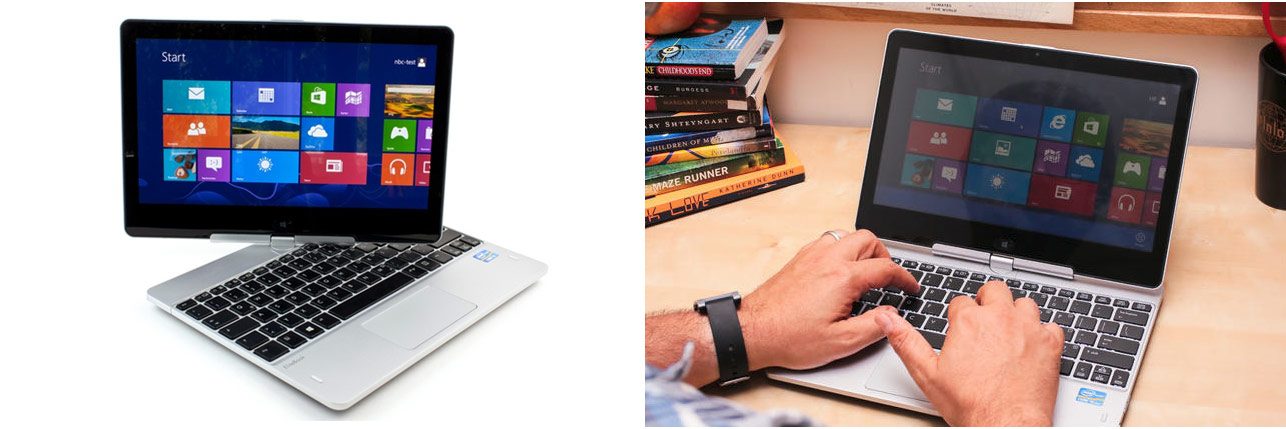
The EliteBook Revolve 810 offers almost anything one could want in an 11-incher, but its high price tag can be a deal-breaker for most
Overall, though, you are sacrificing a fair bit when going with one of these over the modern 12/13-inch ultrabooks available out there, or even some of the smaller options that we’ll cover down below. Even so, though, these premium 11-inchers still make sense if you’re buying used/refreshed in the $300 or lower price range.
Moving up in screen size, with 12-inchers you’re mostly getting Windows tablets with 3:2 and 16:10 touchscreens, premium designs, and different kinds of hardware specs, based on your budget. The Microsoft Surface Pros and HP Envy X12 lineups come to mind as recommendations, and all of these are covered in this detailed separate article.
With 13-inch and larger ultrabooks, this is where you’ll find the best-balanced small and lightweight laptops available these days, from popular models such as the Dell XPS 13, HP Spectre x360, Razer Book 13, or the Microsoft Surface Laptop, but also the newer ultra-compact launches of recent years, such as the M1/M2 MacBooks built on Apple silicon, highly-portable productivity and business laptops such as the Lenovo ThinkPad X1 Nano or Asus ZenBook S 13, as well the powerful gaming-ultrabooks with dedicated graphics, such as the Asus ROG Flow X13 (AMD) and Flow Z13 (Intel), or the Razer Blade Stealth, all compact 13-inch computers with dedicated Nvidia graphics.
Finally, if you absolutely have to go the ultra-compact route, I’d rather suggest one of the smallest 10-inch and sub-10-inch options in the next part of this article.
The best mini laptops (1o-inch or smaller)
With old-style clamshell netbooks no longer a reality, there aren’t many 10-inch or smaller laptop-format computers out there, with a few notable exceptions. There are, however, quite a few good 10-inch tablets to consider, paired with keyboard docks or folios for laptop use. And there are also a couple of pico-sized handheld gaming projects such as the GPD Win, Steam Deck, or AYA Neo, that we’ll get to in a bit.
Chuwi MiniBook X, OneMix 4 and GPD Win Max 2
These are the best compact laptops that you can get with fairly modern specs today.
The MiniBook X from Chuwi is a metal 2-in-1 design that weighs about 2.1 lbs (.95 kg) and offers a 10.5-inch 16:10 IPS touchscreen, a full-size backlit keyboard, and competitive hardware specs. This is built on an Intel Jasper Lake N5100 Celeron processor with 12 GB of RAM and 512 GB of SSD storage. There’s only a small battery inside, though, at 26Wh, so don’t expect long runtimes.
The MiniBook X is available on Amazon now, for under $350. Follow this link for more details.
I’d like to give this a proper review – this seems very interesting; I just hope they didn’t try too hard to make it that lightweight and unnecessarily sacrificed battery life in the process.
The One-Netbook OneMix 4 is perhaps the more interesting product here, a 10-inch 2-in-1 with Intel Core U hardware, the same kind available in ultralight laptops such as the ThinkPad X1 Nano.
Update: A follow-up OneMix 5 (also known as One Notebook 5) generation was recently announced, a slight refinement of the existing OneMix 4, with updated hardware and a interesting Convertible format. We discuss this further down.
Back to the OneMix 4, this is one of the smallest touch screen laptops available at this point, as it weighs 1.7 lbs (.77 grams) and measures roughly 17 mm in thickness. It’s also built well, with an aluminum chassis and a black minimalist design, and offers more ports than you’d expect from a computer of this size, with USB-A, 2x USB-C, a microSD card reader, and an audio jack.
The keyboard is backlit and occupies the entire length of this design, allowing it to compromise less than the older netbooks used to. As shown in Brad’s review over at Liliputing, the keycaps are nearly the same size as on an 11-inch laptop, but with still narrow spacing that makes it feel rather cramped. The clickpad is pretty short as well, but that’s surely no surprise on this sort of laptop.
The touchscreen is a nice touch here as well, alongside the convertible 2-in-1 form factor. There are small bezels around the panel, which is actually a pretty good IPS option with 16:10 aspect ratio, 2560 x 1600 px resolution, 300+ nits of brightness, and 100% sRGB color coverage. This also supports an N-trig pen. There’s no webcam at the top, though.
The hardware inside this mini-laptop is an efficient Intel Core i7-1130G7 platform running at 7-15 W, paired with up to 16 GB of LPDDR4x memory and SSD storage. There’s room inside for an M.2 2280 drive, so the storage can be upgraded if you want to. There’s also a fan on this laptop, and a 38.5 Wh battery. That’s not bad for a 10-inch design, but don’t expect more than 4-6 hours of multitasking and 7+ of video here.
Overall, this sure is a compelling 10-inch machine that can run Windows or Linux, and most of the applications you’d be able to run on an ultrabook. It’s not cheap, though, starting at $1200.
Update: The newer OneMix 5 is available now for $1299, from MiniXPC. It offers a interesting format, like a miniaturized Microsoft Surface Studio, with still a 10-inch 1600p display, but now with newer Intel Core U hardware, up to 32 GB of RAM, up to 2 TB of SSD storage, and a 41 Wh battery.
The GPD P2 Max is a slightly more affordable 8.9-inch laptop, but perhaps not as practical or as powerful as the two above, as it’s built on an Intel Jasper Lake Pentium platform (or Core m in the previous generation) and only offers a smaller keyboard with tiny keys, fewer ports, and a 35Wh battery.
This is also not a convertible, but at the same time, it is a lighter pico-laptop at only 1.43 lbs, it’s fanless and completely silent, and can still handle basic everyday tasks reasonably well, while allowing for longer runtimes than the One Mix 4 thanks to the more efficient hardware inside. If you can live with a laptop this small, this should be on your list.
And then there’s the newer GPD Win Max 2, a powerful 10-inch mini laptop dubbed a “handheld gaming PC”.
This is surprisingly powerful for its size, available in either Intel Core i7 or AMD Ryzen 7 U variants, with up to 64GB of LPPDR5x memory and fast SSD gen4 storage. Add in a metal chassis, a 1600p IPS display with pen support, a QWERTY keyboard, a 67 Wh battery, and a good selection of full-size ports, and there’s no surprise this catches a lot of attention in this niche.
Furthermore, what makes this a handheld gaming PC, on top of everything else, are the implemented joysticks and triggers that offer the functionality available with a game controller. You’ll want to go through some detailed reviews on how these feel with actual gameplay, though.
All these combined make the Win Max 2 a complete mini laptop, and the best such device available in a 10-inch format as of late 2023. It’s pricey, though, as expected given the offered specs and features…
Follow this link for the latest configurations and prices at the time you’re reading this article.
Microsoft Surface Go 4, Go 3, Go 2
When it comes to 10-inch tablet laptops, the Microsoft Surface Go is still my go-to recommendation in this class as one of the few 10-inch Windows devices with modern specs and features. You’ll still find the older Go 2 and Go 3 models in stores, as well as the newest Surface Go 4. They’re more or less the same in design and functionality, just slightly faster with the newer generations, especially in the base-level configurations.
The Surface Go 3 is still the most interesting of these three options today. This is Microsoft’s smaller and less powerful alternative for their Surface Pro lineup, as well as their most inexpensive model. It’s not necessarily cheap, though, starting at $399 MSRP for the tablet alone, with the keyboard folio and the Surface pen coming as extras.
That’s for the base model Surface Go 3 with an Intel Pentium processor, 4 GB of RAM, and 64 GB of storage, and higher-tier options go up to $700 for faster specs and LTE connectivity. I’d primarily consider those budget versions, though, and keep in mind that Microsoft offers discounts for students/parents/teachers/ military personnel all year long, as well as various bundles and periodical discounts for everyone else, so you should keep an eye on their site for updates.
Despite its price, the Surface Go is a worthy portable and affordable travel companion or computer for kids. Don’t expect to run demanding tasks or games on this thing, but it will handle basic everyday browsing, content streaming, text editing, and the likes just fine.
The Go is also built from a durable and lightweight magnesium alloy with Gorilla Glass on top of the screen, it’s extremely lightweight at only 1.15 lbs (for the tablet, and 1.7 lbs with the keyboard folio), gets an excellent-quality 10-inch IPS touchscreen with a 3:2 aspect ratio and pen support, as well as two cameras, one of the front and another on the back.
All these are powered by Intel fanless hardware, paired with 4-8 GB of memory, 64-128 GB of eMMC or SSD storage, and a 27 Wh battery that offers 4-8 hours of tested daily-use battery life and 10+ hours of video on a charge. The battery charges via USB-C and supports quick charging.
As far as the Surface Go 4 goes, this comes with a faster Intel N200 quad-core processor, 8 GB of RAM as standard, and 64 GB of storage. It’s more expensive than the base Surface Go 3 model, though, starting at $579 at launch.
The Surface Go is usable as a stand-alone device, with the cleverly integrated stand on the back, but much more versatile when hooked up to its backlit keyboard cover. Given this is a 10-inch device, expect the keys to feel rather cramped for those of you with larger hands, but the layout should be fine for kids and users with smaller hands.
You’ll find more about the Surface Go in this article, and you can also check out the latest configurations and prices via this link.
Lenovo Chromebook Duet
What if you don’t necessarily have to run Windows on your compact laptop? What if you’re activities are mostly Internet-based and there’s no need to run any Windows-specific software?
In this case, an iPad or perhaps an Android tablet might be options to consider, especially since these are backed up by solid ecosystems and a wide range of compatible accessories such as stands, keyboards, or pens. At the same time, these could end up fairly expensive, but there’s one more option that sells for less: the Lenovo Chromebook Duet.
Yep, I started this article by suggesting a couple of Chromebooks and will finish it with another one. I’m not going to go over what a Chromebook can and cannot do all over again, I’ve explained it in this article, so let’s discuss the Duet.
Much like the Surface Go, the Lenovo Chromebook Duet is made out of metal and feels premium and sturdy. It comes with a canvas back cover that includes a built-in kickstand, and a keyboard folio, both bundled with the tablet by default, and all these start at sub $300.
The screen is a 16:10 aspect ratio, FHD IPS, and touch, so a bit smaller than the 3:2 available on the Go. It’s bright and punchy and colorful though, which is awesome for a budget device that normally compromises at this level. Not this one, though.
As for the keyboard, it’s cramped, as you’d expect from a 10-inch implementation, it’s not backlit and can’t be angled like on the Surface Go, but it’s otherwise fine, and the same can be said about the integrated clickpad. A USB-C port handles the connectivity, and there’s a camera on the front, above the screen, but no 3.5 mm jack, so you’ll have to use wireless headphones with this one.
Specs-wise, the Chromebook Duet runs on an ARM-based MediaTek 8Core platform with 4 GB of RAM and 64/128 GB of storage. That’s fine for a lightweight and optimized environment such as ChromeOS, and the everyday user experience is snappy and smooth in both tablet and laptop modes. Not as smooth as on an iPad or some of the higher-tier Chromebooks out there, but fine for daily use, and this can also run Android apps/games well since it’s an ARM platform. Finally, battery life is where this nails it, with 10+ hours of real-life daily use and 12+ hours of video on a charge. That’s better than on the Surface Go.
Bottom point, the Chromebook Duet is a game-changer and an excellent buy for under $300. Lenovo nailed it with this product, so if a ChromeOS device would work for you, this would be my budget go-to in this niche even over the Surface Go. As long as you can actually find it in stock, since this is in very high demand.
Follow this link for more details and updated prices and configurations.
The Lenovo Tablet 10 could also be an alternative to consider if you’re after a 10-incher that can last for longer on each charge, offers more ports, and is overall more ergonomic in laptop mode, as this one gets a keyboard dock, not a keyboard folio.
It starts at around $400 as well, or $500 with the keyboard, but Lenovo offers occasional discounts for as low as $350. As the name suggests, this Tablet 10 gets a 16:10 10.1-inch IPS touchscreen with pen support, and Intel Gemini Lake hardware with 4 GB of RAM and 64 GB of storage, so it’s not as speedy as the Surface Go. It will outlast it on a charge, though, thanks to the 39 Wh battery inside. You should also consider that the keyboard is not backlit.
All in all the Surface Go is still my favorite, but the Tablet 10 from Lenovo can be a good alternative if you’re on a tighter budget and can find it for cheap. Follow this link for a more detailed comparison between the two, and this one for updated prices and configurations at the time you’re reading this post.
Other affordable Windows tablets include the rather unique Lenovo Yoga Book or some of the older Asus Transformer Pad Minis and Acer Aspire Switch tablets, if you can still find them in stock.
Finally, you’ll also find some lesser-known products that sell for under $200, like the CHUWI Hi10 Air or the Fusion5 Tablet PC (more details via this link), but our first-hand experience with these is limited, and I’d only recommend them if none of the other models are within your budget, and if you can get these from stores that allow easy returns and replacements. Oh, and adjust your expectations according to their price, you’re getting what you’re paying for with these cheap small tablets.
Ultra-compact hand-held micro computers
We must also touch on this class of tiny personal computers represented by the GPD Win, Valve Steam Deck, Asus ROG Ally, or the AYA Neo projects (pus a few others), all designed and marketed primarily as hand-held gaming devices, but all flly-capable Windows devices at the same time.
The GPD Win 4 (in its most recent generation) offers a 6-inch 1080p display, which slides up to unveil a touch QWERTY keyboard tucked underneath. The screen is flanked by controllers and the whole thing weighs around .56 kg (1.23 lbs).
Inside, the GPD Win 4 is powered by an AMD Ryzen Hawk Point U hardware platform, with options for either a Ryzen 7 8560U (with Radeon 760M, 8 CUs) or Ryzen 7 8840U (with Radeon 780M, 12 CUs), up to 32 GB of LPDDR5x memory and 2 TB of SSD storage, and a 45 Wh battery. This is the kind of hardware you’d normally get in some of the most powerful ultraportables with larger formats and display.
With the 1080p screen and RDNA3 AMD Radeon graphics, the Win 4 is designed to handle a multitude of games, including modern AAA titles. But its format, with a QWERTY keyboard, also makes this a fully functional mini laptop, unlike some of the other handheld designs that are primarily made for gaming, and lack a keyboard.
Aya offers a few different devices in this class, such as the Aya Neo 2S or the Aya Neo Air, as some of their latest launches. These are still built on powerful AMD hardware, but lack a physical keyboard and are primarily designed as gaming handhelds with a large screen and integrated gaming controllers, and less so as potential all-purpose mini laptops such as the GPD model.
You’ll find more about one of the Aya Neo model from our detailed review.
The Asus ROG Ally is an even more powerful device, but still a handheld-first design. It is built on an AMD Ryzen Z1 Extreme Processor with 16 GB of RAM, and drives a 7-inch FHD IPS display. It integrates advanced controllers and a 40Wh internal battery, and weighs a little over 600 grams.
Lenovo also offer a more recent handheld product, called the Lenovo Legion Go. This is a larger and heavier device than the other options in this space, as it offers an 8.8inch 1600p display, a powerful AMD Ryzen Z1 hardware platform, and a 50 Wh battery.
This also comes with a unique feature: gaming controllers that can be attached to the main tablet-like device, but can also be detached and used independently. However, the higher weight of this format, as well as the fact that the hardware needs to accommodate a 1600p native screen resolution, make steer some potential buyers towards the other options in this space.
Finally, the all-popular Valve Steam Deck remains probably the best-value option in this niche, despite its age and the fact that it doesn’t offer the same performance and features as the other devices mentioned earlier. Instead, this is the better polished variant in terms of hardware and software combined, and also comes as the most affordable. You’ll find more about it from our detailed review.
All these are available in stores as of the second part of 2023.
FAQ
I’ll finish this up with some quick answers to some of the most asked questions about these sorts of mini laptops. Here we go.
What is the difference between a regular laptop and mini laptop?
Size, of course, as well as everything that derives out of trying to create a fully functional computer in a tiny chassis: lower power hardware, smaller batteries, fewer ports, more cramped inputs, but also highly portable designs.
What size (how small) is a mini laptop?
Any laptop with a screen-size of 12-inch or less should be included in this segment.
What makes a good mini laptop?
You’ll have to compromise here and there with a mini laptop, but for the most part, you’ll want a good price, fair build quality, and a combo of specs/battery life that can handle your demands. It’s a balance game with these devices, and there are options for most expectations.
What are the advantages of a mini laptop?
You’ll want one of these for the compact portable format and lightweight construction. As a secondary, many of these options are also inexpensive, so excellent as no-fuss travel companions or laptops for your kids.
What are the disadvantages of a mini laptop?
Based on your budget, you’ll have to accept plastic builds, rather cramped keyboards, potentially lackluster display quality, and not much in terms of performance or even battery life with some units.
Wrap up – 10-inch and smaller laptops
These are the 11.6-inch and 10-inch small laptops and mini tablets I’d look at right now if I’d be in the market for an ultra-compact computer, either Chromebooks, MacBooks, or Windows options.
Most of them cater to those of you on limited budgets, those looking for devices for primarily tablet use, or those looking for secondary travel notebooks or inexpensive notebooks for your kids. The options for high-end 11 and 10-inchers are limited nowadays when most OEMs have migrated their higher-tier options towards the 12-inch and 13-inch classes, which offer an increased screen area and more space inside for components and battery cells, as well as a multitude of modern features that you won’t get on these smaller computers.
Thus, if you do need more power in a small form factor, you should also check out our list of recommended 1 2 and 13-inch ultrabooks and thin-and-light laptops, where you’ll find marginally larger, but significantly more competent options.
With that in mind, we’ll wrap this up here. I’m constantly updating this list of the best mini laptops out there as new qualifying devices are launched, so do save the link and come back in the future. Furthermore, if you have any questions, spot any mistake, care to suggest a device that’s missing from the list or just want to add anything to the article, leave a comment below, I’m around to reply and help out.

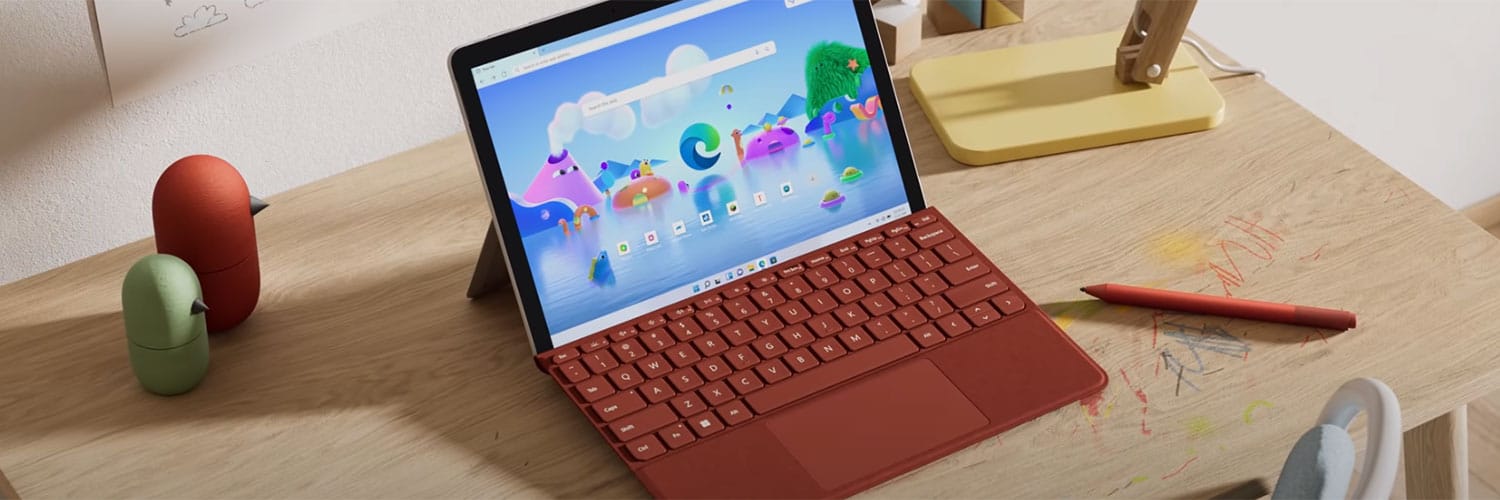

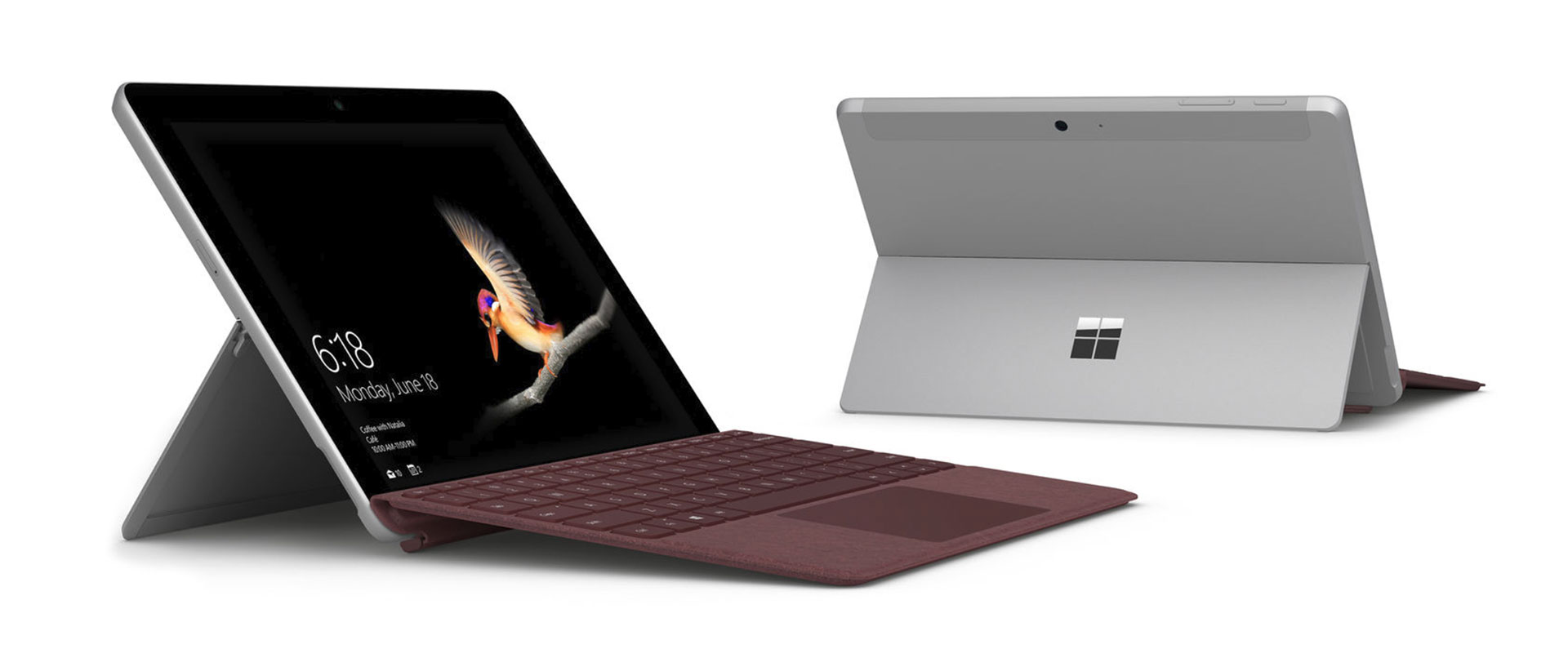


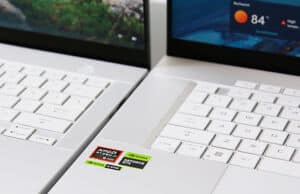
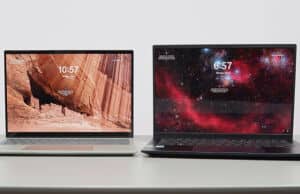
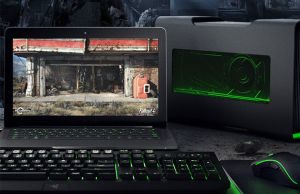
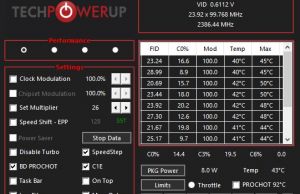
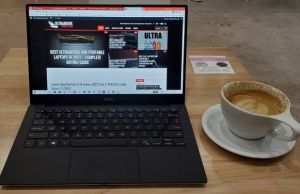
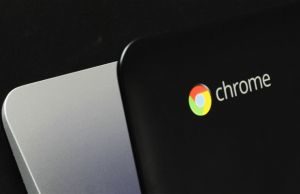
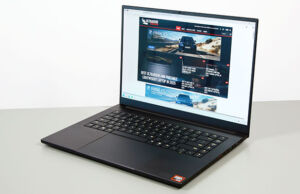
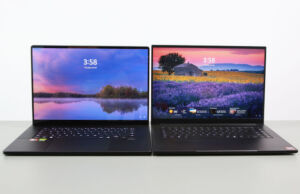
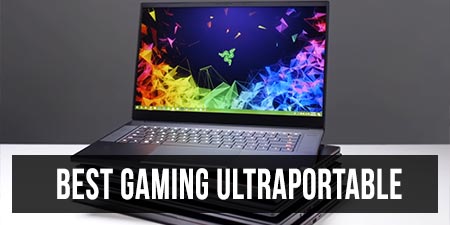
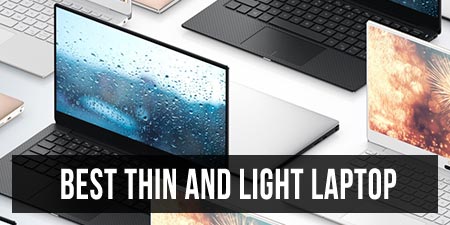
William Nigro
November 23, 2021 at 3:39 pm
One Netbook OneMix 4 has an 11th generation i7, 16gb of ram and a 10.1" screen.
GPD also has an 8.9" laptop with an i7 and 16gb of ram.
Andrei Girbea
December 2, 2021 at 7:29 pm
thank you, updating!
Romy
June 6, 2022 at 1:32 am
yup, this laptop is almost perfect for me. Sadly, it does not have webcam 🤦♂️🤦♀️. Nowadays, webcam is very critical. We can not rely on our phone to be the webcam because we need phone to call someone while attending an online meeting.
Should we always bring portable webcam? &#$a1¢.. no way
Grenville Firth
December 19, 2021 at 9:22 pm
I am looking for a small mini laptop with the following capabilities
A) Has to have printing capabilities
B) Has to have USB port
Andrei Girbea
December 20, 2021 at 10:07 am
Most option have those
lambda
March 3, 2022 at 12:56 pm
Macbook Air with TN screen?!
Doesn't look like an updated article.
Andrei Girbea
March 3, 2022 at 1:41 pm
this article is about 11-inch or smaller devices. The updated MacBook air is 13-inch
Linda Krugman
October 11, 2022 at 5:22 am
I'm looking for a small, lightweight computer to use while traveling to internation locations, where luggage weight restrictions are tight. Would use for email, basic internet use, and most importantly to transfer photos from an sd card to an external portable hard drive, and view the images.
Chris H.
October 14, 2022 at 3:32 pm
The recommendations for Surface Go or Lenovo 10 (if you can find one) are very good. Surface Go should outperform the Lenovo 10, but port selection and Micro SD slot location are better on the Lenovo 10. The Lenovo will also work better as a literal laptop option, since kickstand-style 2-in-1 devices can get a little unwieldy. A similar alternative that splits the difference is the Lenovo Duet 3 (Windows – not the Chromebook model), but it's back to the same problem as the Surface Go – kickstand-style and limited ports (you would want to buy a USB-C hub to gain more ports for either the Go or the Duet 3). The Surface Go and the Duet 3 will be lighter weight than the Lenovo10. The Duet 3 screen is nice and bright, though, and the keyboard can function while detached (it has bluetooth on-board). If you can find it in the Pentium Silver model, it can have up to 8 GB RAM and 128 GB of storage.
Linda Krugman
October 14, 2022 at 6:33 pm
Thanks so much for your detailed suggestions!
Frànex onu
October 17, 2022 at 9:55 am
I just need a mini convertible windows 10 laptop that doesn't use an Intel chip
Mike
November 13, 2022 at 1:31 am
I just picked up an aspire one from Value Village for $30,and to my surprise it has a few hours of battery life. A quick update to XFCE and debian and I have a small working laptop again. My HP NC8000 stopped and the cf wifi card on my Zaurus stopped working.
Digitalguy
December 12, 2022 at 3:34 am
The GPD Win Max 2 is missing from this list
Rhyd3n
January 8, 2023 at 11:49 am
GPD Win Max 2 needs to be on this list but also compared against those ridiculous 13" thin books that have zero I/O since it is easily 4 times more powerful than any thing on this list, but also in the price range of other 6800U laptops.
John
September 21, 2023 at 2:00 pm
Having used small 11.6" notebooks in the past I think the OS matters because I find Chromebooks far better UI for small screens then Windows. Having said that, I have a 13.3" MacBook Air that I find almost too small and requires me to choose a scale setting that provides more desktop space at the expense of text size. I occasionally use my Wife's Latitude 15.6" notebook and its actually lighter than my MacBook Air and I find everything much more eye friendly. maybe because I am 60YO and need glasses and just find smaller screens a negative anymore since I use one much more these days. I find myself connecting to a desktop monitor just to get more space.
Andrei Girbea
September 22, 2023 at 2:45 pm
This happened to me over the years too. 15y ago I really enjoyed an 11-inch device, than I moved to 13-inch, and nowadays I think I'd be ready to switch to a portable 15-16 inch model. And I'm not even wearing prescription glasses, although I will have to at some point.
It sure helps that laptops have gotten more portable, as weight matters more to me than size. 10-15y ago, the difference in volume and weight between a regular sized device and a small 10-12 inch one was significant, but nowadays, there are plenty of portable options with larger screens.
Linda Krugman
September 22, 2023 at 5:38 pm
When I fly to international photo trips, and TOTAL carryon weight limit is 15#, every ounce counts. I only use the little computer as a way to backup my images to 2 small external hard drives, and check my email on those trips.
Andrei Girbea
September 23, 2023 at 2:35 pm
makes perfect sense for that particular use scenario
iuyu
November 4, 2024 at 10:30 pm
Also add Dynabook Satellite PRO ET10-G to the list. It has been repackaged with Win11 and is selling here in Europe.
Frank
January 21, 2025 at 9:01 am
Thank you for the informative article and recommendations. I'm interested in getting a sub-12" laptop, primarily to run Linux on. I had an old EeePC (the first gen, 7" one) and miss the form factor. I can get the HP Elitebok Revolve G2 you've mentioned locally (refurbished) for about the same price as a new Asus VivoBook Go 11. The HP has an i5 processor (Haswell version) but is around 10 years old; the Asus is new but has a Celeron processor. Since they are the same price, which is a better buy?
Andrei Girbea
January 21, 2025 at 10:41 am
I'd go with the HP between those two. Better quality laptop, and decent capabilities even with that old hardware.